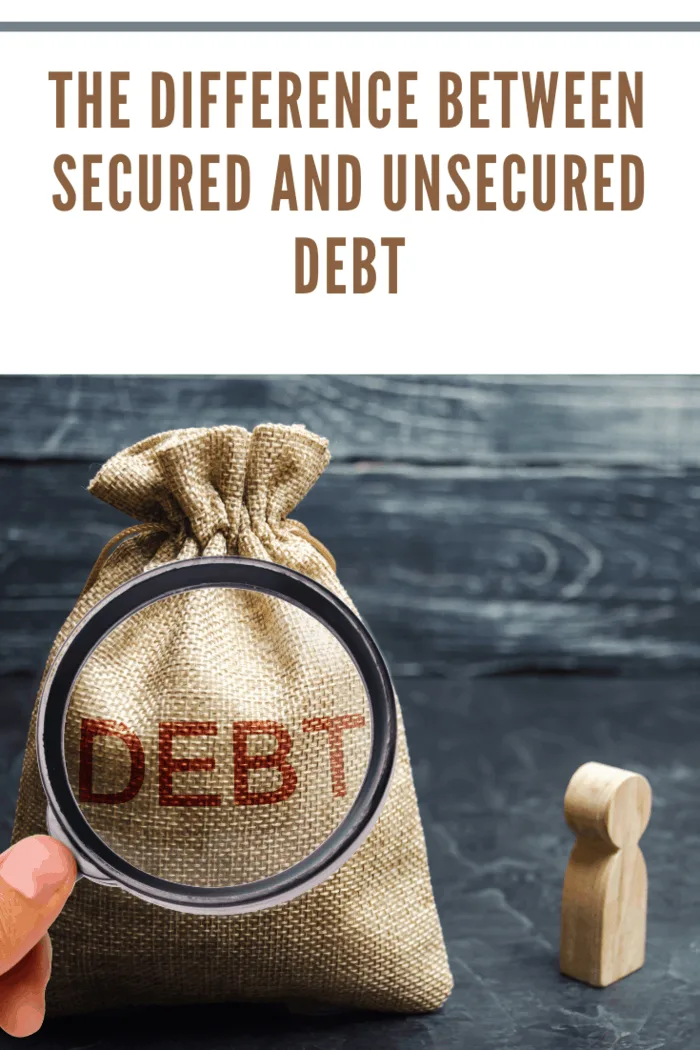There are lots of things to learn about debt. One of the big distinctions is whether a loan is secured or unsecured. Both types come with their own set of pros and cons.
Here’s the difference between secured and unsecured debt.

What Is a Secured Debt?
A secured debt is a loan with some sort of collateral to back it up. This means there’s an underlying asset associated with the debt that can be repossessed by the lender in the event the borrower doesn’t pay. While the benefit to the lender is obvious, secured debts can be good for consumers, as they tend to have much better terms than unsecured loans.
Secured debt has lower interest rates, making the loan repayment less of a burden for the borrower. Further, there’s a sort of symbiosis with secured debts, as the borrower has a great vested interest in paying, so they don’t have to forfeit an expensive asset.
What Are Examples of Secured Debts?
Secured debts are usually employed for large-ticket purchases requiring a loan. The most common secured debts, according to investopedia, are mortgages and auto loans. The vast majority of consumers would have difficulty paying for a house or car without financing of some kind. In order to facilitate this and reduce the perceived risk, lenders require collateral. In exchange, the terms of the loan are made more affordable for the borrower.
What Is an Unsecured Debt?
Now that you know the meaning of secured debt grasping the concept of unsecured debt should be relatively straightforward. In short, these are loans that don’t come with any form of collateral attached to them.
At first, one might wonder why any lender would agree to offer an unsecured loan or why a consumer would agree to a secured one. But there are some pretty clear reasons for the existence of both kinds of loans.
Products like credit cards would exist in a much different form if they couldn’t qualify as unsecured debt. While some credit card options require people to make a deposit to make them a secured credit card, most come with no form of collateral. This makes sense when you consider the rolling balances of credit cards, which often consist of many purchases made at various businesses.
However, the higher interest rates of unsecured debts can make them a more pernicious form of debt. Those who get in over their heads with unsecured debts might want to consider consolidation. This is where various unsecured debts of the same type are combined into a new loan with better terms. Check out Bills.com to get a better idea of how this process can help when you’re too deep in credit card debt or other kinds of unsecured loans.
What Are Examples of Unsecured Debts?
As previously mentioned, credit cards are one of the most common kinds of unsecured debts. While these are obvious examples, there are a few other big ones you should know about.
Other types of unsecured debt include:
Medical Bills –
Your lender can’t repossess your health. This is why medical bills fall into the realm of unsecured debt.
Student Loans –
You can’t give back everything you learned at a university. Student loans are notoriously difficult to deal with for those seeking loan forgiveness.
Personal Loans –
A loan written out to you for personal expenses often isn’t going to come with any kind of collateral. Personal loans generally fall into the category of unsecured debt.
Knowing the differences between secured and unsecured debt can help you make better financial decisions when looking at loans.
—-
Resources:
